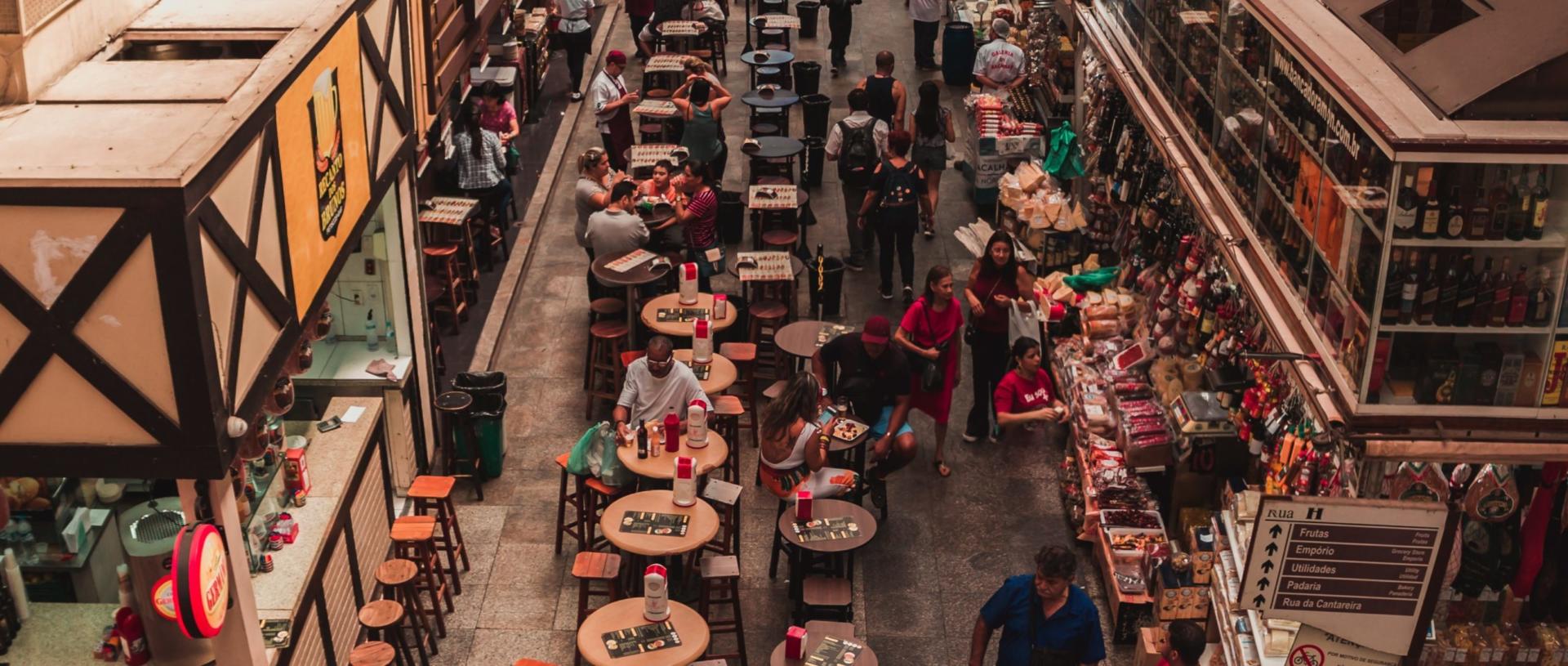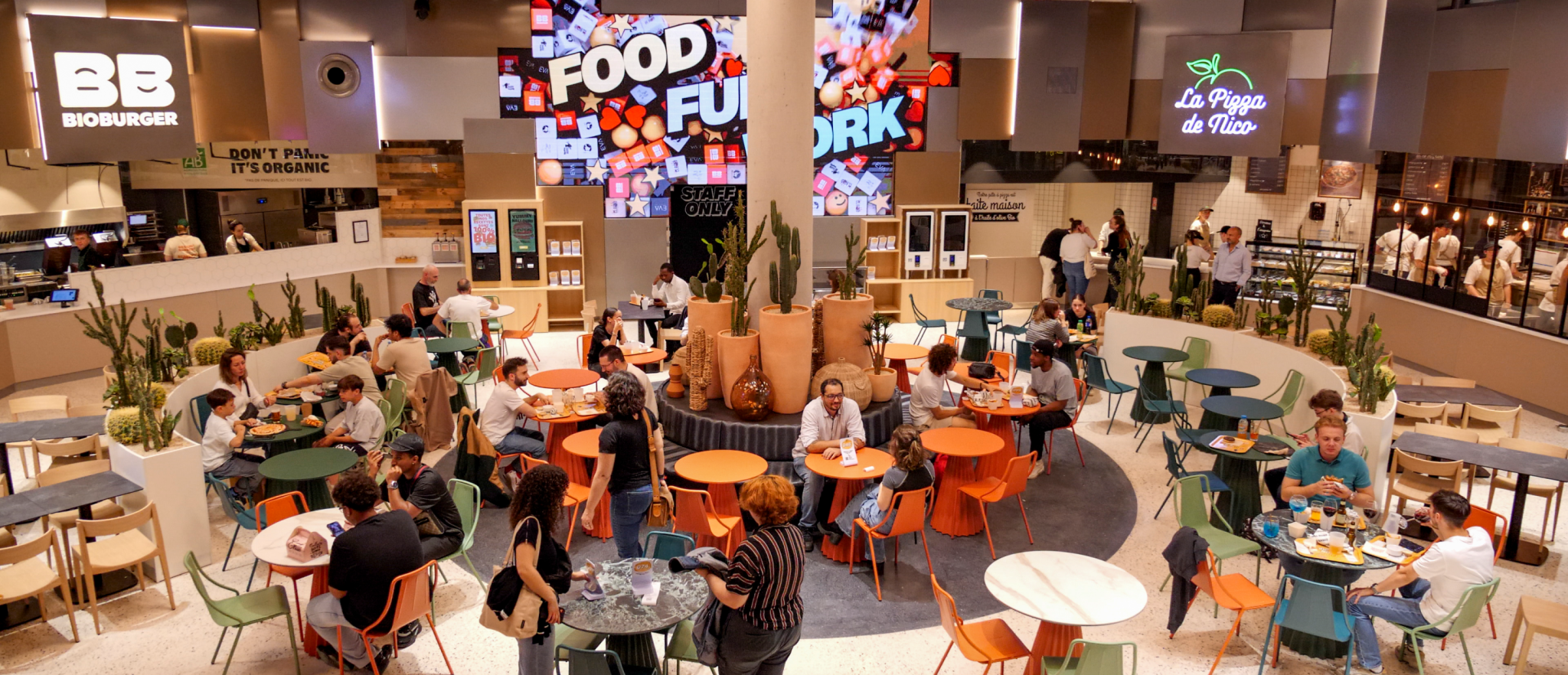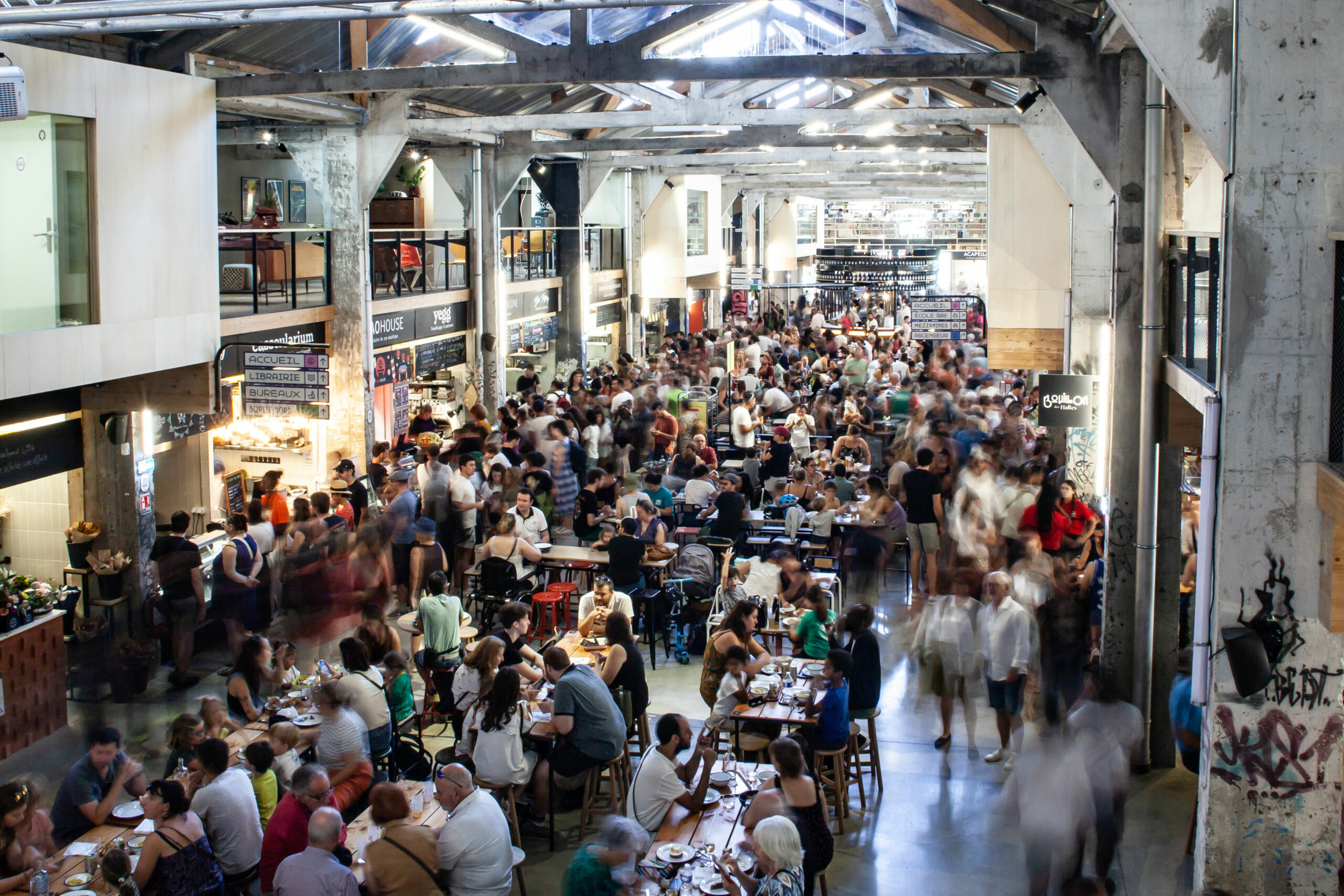How can you lighten the material management of a multi-brand food court?
14 April 2025
Between stand-by-stand checkouts, cash registers that don't talk to each other, three printers for two meters of counter space... and QR codes running on a closed circuit, you quickly end up with a system that's too cumbersome, expensive to maintain and complicated to run.
It's a problem we often see in food court The result is an accumulation of material, a customer journey that goes off in all directions, and management that quickly becomes unmanageable.
In this article, we share concrete solutions for :
➜ share control tools without losing legibility
➜ manage several chains with a single cash register software
➜ lighten the prod with the right material, in the right place
➜ centralize the customer journey without restricting flexibility
The aim is to make food short, fluid, clear and easy to manage on a day-to-day basis.
Single point-of-sale software: the key to managing multiple chains without complexity
When each retailer comes with its own cash register, everything becomes more complicated: It's impossible to have an overview, with each corner working in its own corner, and maintenance quickly becoming a headache.
A point-of-sales software common core.
It allows you to manage multiple brands from a single interface, while maintaining separate accesses, distinct maps and stats for each stand. No one steps on anyone else's toes.
This is particularly useful for short foods with rotating programming, as at HEAT in Lyonwhere the stalls change every week.
No need to install a new box for each rotation. All you have to do is add the sign to the system, create access for it and set its card parameters. It takes minutes, not hours.
Management is simpler.
You train teams on a single tool. You standardize sales flows. And you can integrate other bricks (ordering, payment, loyalty) without pulling your hair out.
Shared kiosks and a transversal shop: the winning combo for the customer journey
In a food court, if each stand has its own customer path, it quickly becomes a mess. For the customer, this means queuing several times, re-scrolling the same dishes on different interfaces, or having to pay at each stand. Not very fluid.
The right approach is multi-basket controller A common interface where customers can order from several stores at once, without having to repeat their journey at each stand.
Each corner keeps its map, its visuals, its identity. But everything happens in the same place, on the same screen or the same phone.
"And you can go even further, thanks to cross-functional stalls, where you can group a selection of products from several stands around a theme: "low prices", "veggie dishes", "lunchtime formulas"... It's a great way to guide customers, create synergies between brands, and boost the products you want to push."Obypay's food court solution
Whether on a Self ordering kiosk or in QR code at the tableIn this way, customers can navigate from one corner to the next, compose their basket at their leisure, and pay in one go. The system then automatically allocates orders to the right corners.
And best of all, you don't need one terminal per stand.
One or two are enough to cover the entire site, with mobile order-taking as a complement.
You can also use QR codes for the click & collector for display the menu without activating the command.
By centralizing the customer journey, you avoid disruptions, reduce friction points and simplify the experience, without restricting choice.
A single point of entry, multiple brands, a single shopping basket. Simple and efficient.
Cash register + all-in-one solution: the duo that simplifies management
Cash register software alone is fine for tracking sales. But in a food court, it's not enough.
You need a solution capable of managing order-taking, payment, multi-brand ventilation, loyalty... and to do so without friction.
This is where the complementarity between a common cash register and a well-integrated all-in-one solution makes all the difference.
The caisse manages the base : collections, reporting, VAT, accounting exports.
The all-in-one solution takes over on the customer side:
➜ order on terminal or QR code
➜ multi-corners basket
➜ bundled payment
➜ loyalty program valid on all stands
➜ prepaid cards or targeted offers according to customer profile
Everything is connected. Each order is automatically broken down, payments are distributed between the different banners, and stats are consolidated on the manager's side and accessible individually for each stand.
Driving benefits :
➜ fewer re-entries
➜ fewer checkout errors
➜ a clear vision, even with regularly rotating signs
➜ easier tracking, with no need for Excel spreadsheets or cobbled-together exports
And, not least, you don't need to train your teams on 3 different tools. Everything happens in a coherent ecosystem.

Production: one screen or printer per stand is all you need
Each stand doesn't need its own cash register, kiosk or complete duplicate system. What it does need is a simple tool for receiving orders a screen or a printer.
When all orders are managed by an all-in-one solution, each stand receives only the dishes it needs, in the right order, with the right information.
No need to search, no need to sort. The kitchen team can concentrate on production, not on ticket interpretation.
Operational benefits :
➜ less equipment to buy, install and maintain
➜ less noise, fewer cables, fewer breakdowns
➜ space-saving, which counts when every square meter is optimized
And if you change a sign or reorganize corners, you don't have to dismantle everything. You keep your structure, reconnect the screen, and off you go again.
Sharing without restricting: how to maintain flexibility within a common framework
Setting up a common structure does not mean imposing the same rules on everyone.
You can share tools, while letting each brand manage its business in its own way.
Each stand keeps :
➜ access to the back office
➜ its menu, its products, its visuals
➜ sales statistics, opening hours, special offers
The site manager has a global view: it tracks sales, flows and volumes, stand by stand.
It can activate joint operations, highlight certain brands or themes (veggie dishes, kids' menus...), without encroaching on everyone's daily routine.
This shared framework enables us to be more responsive.
A new sign arrives? You set it up in the tool, allocate it a stand, and it can start work straight away.
In short, everyone has their own autonomy, within a coherent system for everyone.
Discover our all-in-one solution for food courts
Are you running a food court or preparing to open one?
We designed a solution designed for this format : multi-brand ordering, automatic distribution, pooled checkout, loyalty, centralized tracking... everything you need to simplify management, without losing flexibility.
Our team is available to discuss your requirements, show you the solution and answer your questions.
And to see what it's like out in the field, take a look at our customer feedback:
➜ Le Palais Nancy: a hybrid food court for entertainment and dining
➜ HEAT: a unique vision of the Lyon food court
➜ Palmito: the food market with an "aloha" spirit
➜ Sept Lieux: using digital technology to enhance the customer experience at a food court












